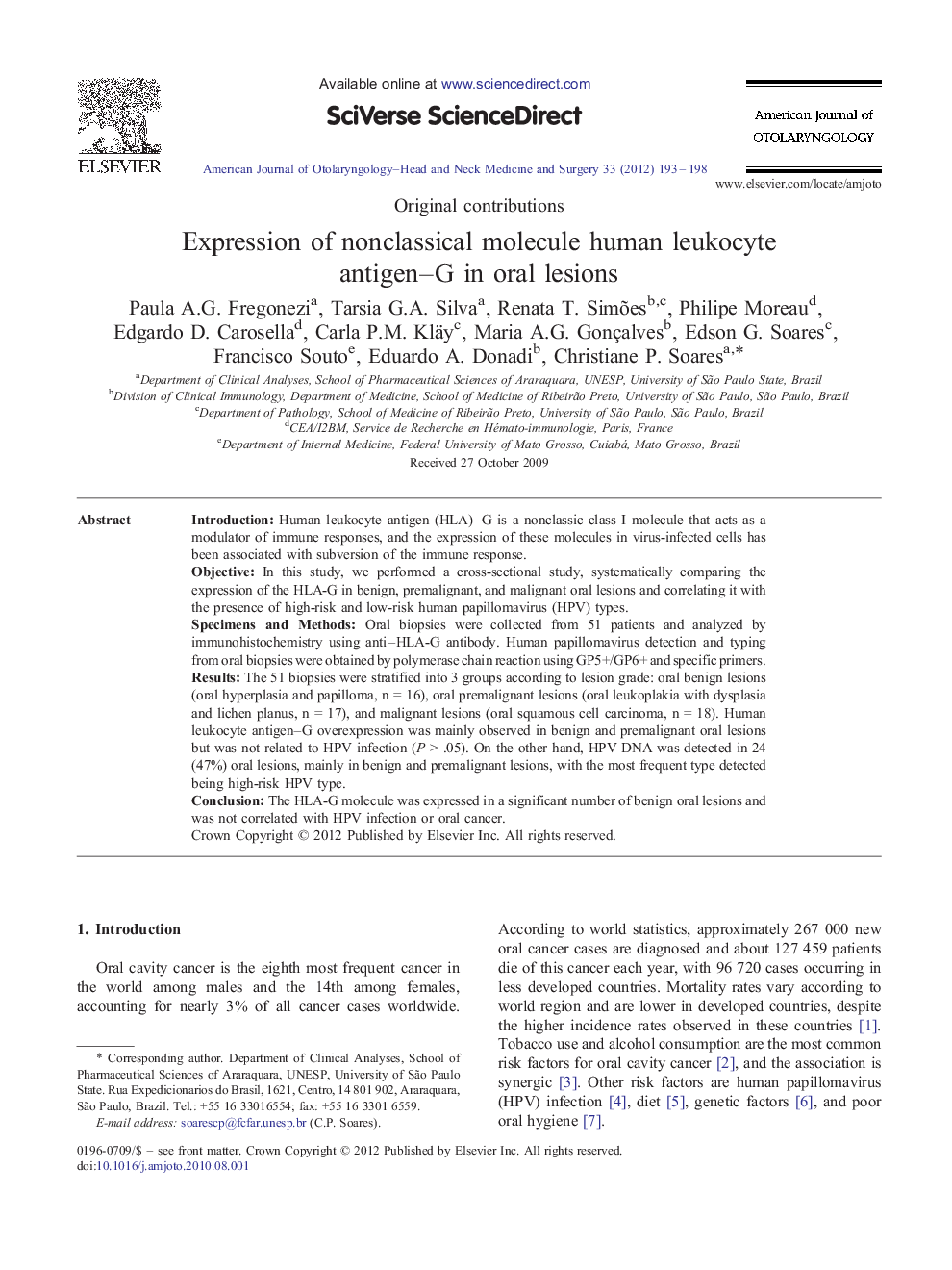| Article ID | Journal | Published Year | Pages | File Type |
|---|---|---|---|---|
| 4103775 | American Journal of Otolaryngology | 2012 | 6 Pages |
IntroductionHuman leukocyte antigen (HLA)–G is a nonclassic class I molecule that acts as a modulator of immune responses, and the expression of these molecules in virus-infected cells has been associated with subversion of the immune response.ObjectiveIn this study, we performed a cross-sectional study, systematically comparing the expression of the HLA-G in benign, premalignant, and malignant oral lesions and correlating it with the presence of high-risk and low-risk human papillomavirus (HPV) types.Specimens and MethodsOral biopsies were collected from 51 patients and analyzed by immunohistochemistry using anti–HLA-G antibody. Human papillomavirus detection and typing from oral biopsies were obtained by polymerase chain reaction using GP5+/GP6+ and specific primers.ResultsThe 51 biopsies were stratified into 3 groups according to lesion grade: oral benign lesions (oral hyperplasia and papilloma, n = 16), oral premalignant lesions (oral leukoplakia with dysplasia and lichen planus, n = 17), and malignant lesions (oral squamous cell carcinoma, n = 18). Human leukocyte antigen–G overexpression was mainly observed in benign and premalignant oral lesions but was not related to HPV infection (P > .05). On the other hand, HPV DNA was detected in 24 (47%) oral lesions, mainly in benign and premalignant lesions, with the most frequent type detected being high-risk HPV type.ConclusionThe HLA-G molecule was expressed in a significant number of benign oral lesions and was not correlated with HPV infection or oral cancer.
